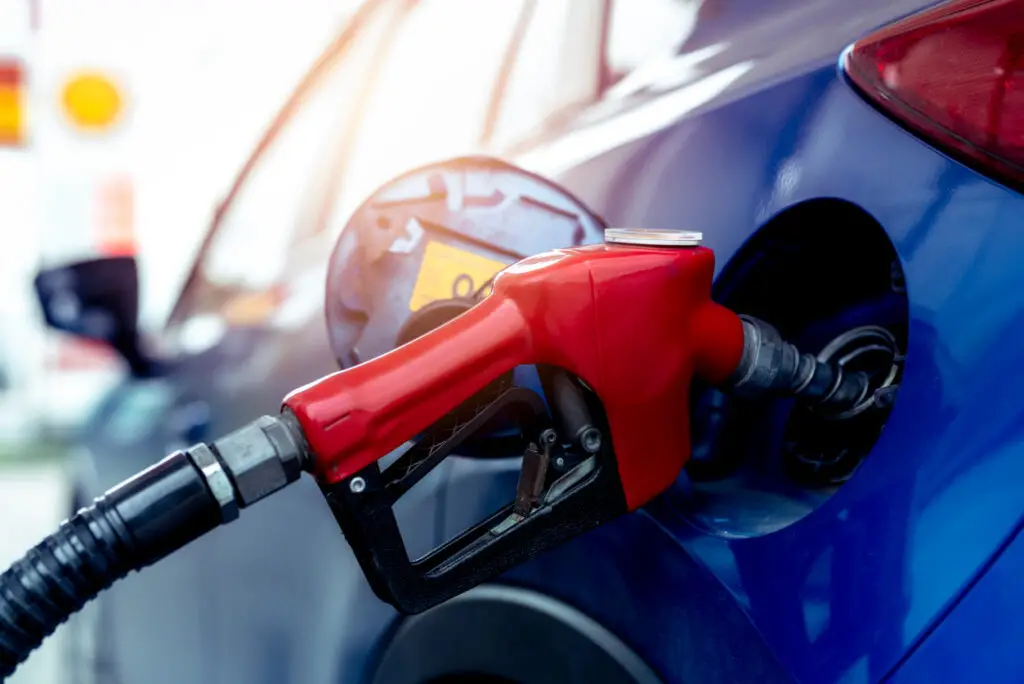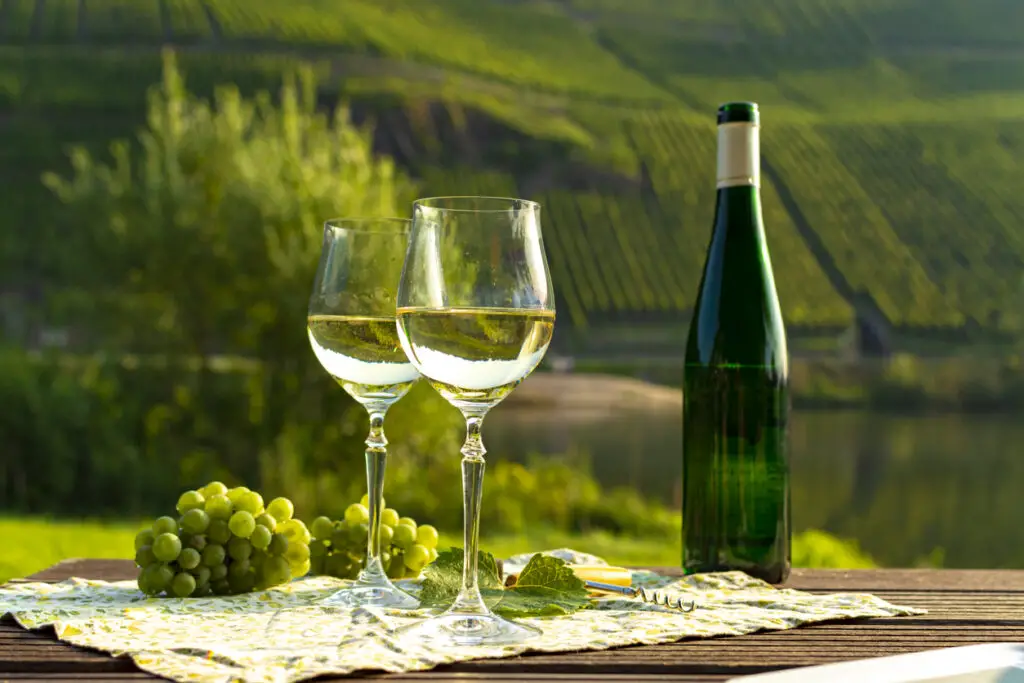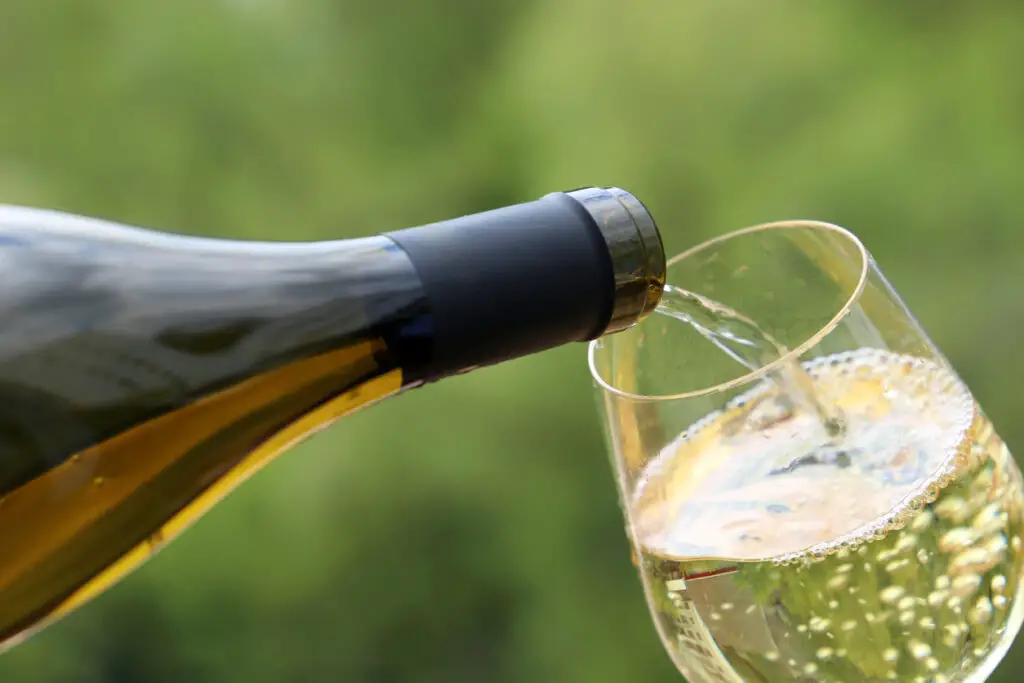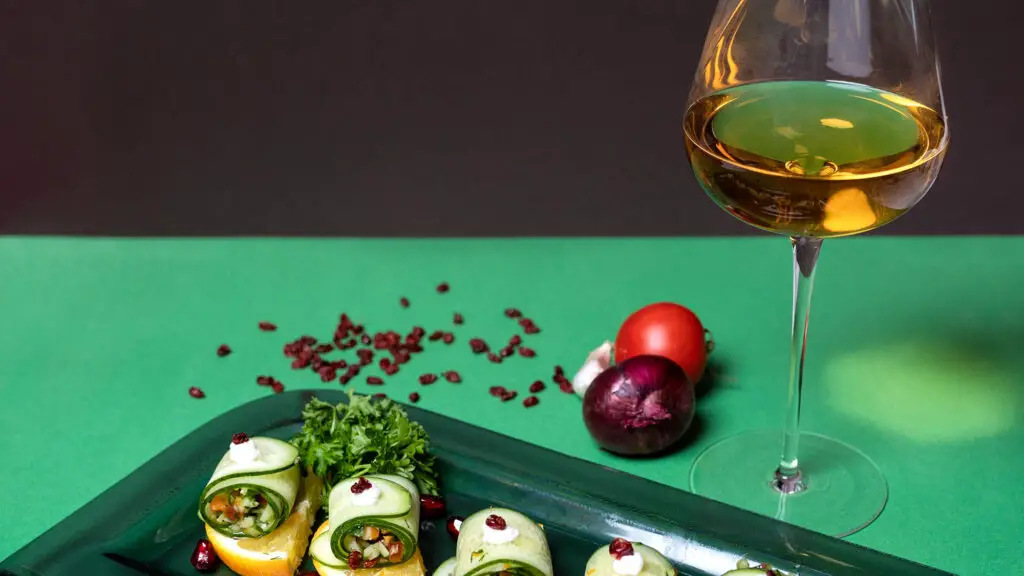Do you like the smell of a new car or a can of tennis balls that have just been popped open? There are many seemingly odd smells that we are drawn to. Smells bring up memories and help us experience the world in different ways. So, what about wine? Have you ever opened a bottle of Riesling and thought it must be bad because of the kerosene aromas? Why does riesling smell like petrol?
Some Rieslings smell like petrol because of a compound, called TDN, that is brought on during the aging process. It is a natural chemical byproduct. While it may not appeal to everyone, this striking aroma is sought after by many Riesling lovers.
Why would you or anyone else want to drink something that smells like something that fuels your car? Believe it or not, it is seen by many as adding the desired character and balance in Riesling wine. There are many types of food and drink that appeal to certain cultures and not others. Stinky tofu or kimchi is loved by many but abhorrent to others. That is part of the beauty of having so much variety in what we consume.
Here we will share what we know about Riesling and its infamous petrol aroma.
The Petrol Debate
Aromas of petrol, kerosene, or rubber are commonly found in older bottles of Riesling. It is often debated if this is a fault of the wine or not.
Author Note: Some wine experts claim that strong petrol aromas are unwanted and should be avoided by winemakers. Measures to make sure the wine is not over-pressed are said to be taken. They see it as an unwanted result that many have simply accepted as a normal result throughout history.
Yet, there is a cult following for this intense smell. It’s seen as akin to describing a wine as cedar, graphite, tar, or leather. Many people enjoy these ‘funky’ aromas in wine. Some even go as far as praising wines for their barnyard bouquets!
Compounding Factors: TDN

As in all wines, various compounds are responsible for creating the specific scents and flavors we experience from a bottle. Our aroma of interest today, petrol, is no different.
A chemical compound in the wine called TDN (1,1,6-trimethyl-1,2-dihydronaphthalene) is responsible for this unique aroma. TDN is not commonly found in all grapes types or freshly picked grapes. This compound is one of the reasons why riesling smells like petrol.
You will not taste or smell kerosene when biting into a fresh grape off of the vine. Likewise, a freshly bottled Riesling will not fill your nose with burnt rubber.
Like many other plants, wine grapes have a class of pigments called carotenoids. Carotenoids give certain plants their color. It is believed that these evolve into TDN with aging.
As Riesling ages, acid hydrolysis creates TDN from carotenoid precursors. This process is increased by the same factors that are thought to create high-quality Rieslings. The smell of petrol can help you identify if you have a superior bottle.
Factors that produce top Rieslings and increased TDN are ripe grapes with low yields and late harvest, abundant sun exposure, vines that are stressed for water, and heightened acid.
Unlike most wine grapes, Riesling has large amounts of carotenoids that can develop into TDN. Other consumables like tea have carotenoids that develop aromatic compounds when broken down over time.
Author Note: As we have mentioned, the key here is age. Some bottles have been deemed to have “fake” petrol aromas. This comes from an overly warm climate Rieslings that have undergone stress and forced maturation.
Young Rieslings bouts crisp aromatic and fruity aromas. As they age there are shifts toward more earthy and petrol notes.
Aromatic Wine
White wines are sometimes categorized as light-bodied, full-bodied, and aromatic. This points to a wine’s most notable characteristics and intensity on the palate. Aromatic wines are classified by the actual grape profile.
Many wine styles fall into their category due to the characteristics they pick up during the winemaking process. Think about a full-bodied cabernet sauvignon with tons of tannin and texture. Oak barrels used during winemaking impart additional tannin texture and body.
Another example is Chardonnay, which is not aromatic. The smell of butter or toasty vanilla is from elements that are added during the winemaking process like malolactic fermentation and aging in oak barrels. These are not aromatics from the grape itself.
Riesling is considered an aromatic wine. This style of wine has powerful perfumed characteristics that are acquired from the grape. One of the most aromatic rieslings is the Moselland Cat Riesling.
Gewürztraminer, Albarino, Moscato, and Torrontes are other examples of aromatic white wines.
Terpene Compounds = Fragrant Wines

Riesling wines are unique because they have a high concentration of terpenes, a compound class also found in flowers. It is a volatile compound that makes wine fragrant and aromatic.
One type of terpene compound, citronellol, is what gives Riesling its distinctive citrus taste. Another common terpene contributes to herbal notes.
Terpenes are not just for pleasant aromas; they can also have positive health benefits like reducing inflammation and aiding sleep.
Riesling’s Characteristics
Riesling is a white to greenish grape that is used to make white wine.
Having pale greenish straw-like color, Riesling offers crisp citrus fruit and fresh floral aromas.
Bright aromas like lemon, cherry blossom, peach, and ripe apple will fill your nose when you drink Riesling. Sometimes there is a mineral component.
Riesling wines can range from bone dry to intensely sweet. They are occasionally blended with other grape varietals or made into sparkling wine
Sweetness
People often think that all Riesling is automatically sweet. However, it is made in styles that range from dry to sweet.
Riesling grapes are naturally highly acidic so traditionally they have been made sweet to balance the acid. Yet, winemakers have begun to alter the amount of residual sugar left in the bottle. You can find fantastic styles of Riesling that are bone dry with a bouquet of crisp aromas.
Many producers list sweetness on the front or back of the wine label.
Author Note: The German wine classification system labels it’s Rieslings by quality and sweetness level. From sweetest to driest it can be labeled Trocken, Auslese, Spatlese, Kabinett, Halbtroken, Fenherb, and Troken. Although, you may see some simply labeled “dry” or “sweet”.
Origins and Growing Regions
Riesling originated in the Rhine region and has grown in production ever since. Today it is highly popular and widely available for consumption.
Germany is known to produce the best Rieslings in the world. They are produced in a range of sweetness styles.
Austria is also known to produce high-quality Riesling in decent quantities. This bold wine can also be found in the United States, Australia, and Alsace, France.
Noble grape varieties of Alsace include Gewürztraminer, Riesling, Pinot Gris, and Muscat. A fifth grape variety, pinot blanc, is also very commonly grown here.
How Riesling is Made
Riesling grapes strongly reflect the terroir. This grape likes to take on characteristics from the soil and climate and incorporate them into its flavor and aroma profile. This contributes to its superb aromatic qualities.
Riesling ripen earlier than many other well-known varietals. Which means it grows best in cooler climates. In a warm climate, it will ripen too quickly and become overripe and flabby.
The winemaking process for all aromatic wine is usually similar. Grapes are harvested and destemmed then immediately put through a press to separate the juice from the skin and seeds.
The juice is fermented in stainless steel tanks to retain the grapes’ bright aromas. This is often done at cooler temperatures to speed up the fermentation process.
Fermentation is likely stopped before all the sugar has been processed out and allowed to settle at cooler temperatures for a short period. From there the wine is clarified and bottled.
Some producers may hold bottles of Riesling before releasing them for sale or advise it to be cellared for some time. Riesling is one of the few white wines that age well.
Serving Riesling

Because of Rieslings’ high acidity, it can improve with age. You can hold on to a bottle for up to 10 years.
It is best served cold, right out of the refrigerator, around 43 degrees Fahrenheit. Never decant or aerate Riesling wines. You will lose precious flavors. Most high-quality Rieslings will be around $20 to $40.
Riesling and Food
Riesling is a great pair of spicy food because of its acidity and sweetness. Try it with Thai green curry food or a hot Chinese dish. Indian is another wonderful option.
A Sweet style of Riesling will pair well with a dessert that has flavors of dried fruit and cinnamon. Pick out a fruit-topped cheesecake or a berry tart.
Conclusion
Most famously from Germany, Riesling has a long-standing association with the cool climate regions around the Rhine river. Regions in Germany and France specialize in this wine while there a varying amount produced the world over.
Riesling is known for its robust aromatics derived from the grape rather than the winemaking process. it can be found in styles that range from dry to sweet. Riesling, bright in color, offers crisp citrus and floral aromas. A key characteristic of aged Riesling is the smell of Petrol.
While is up for debate, many people seek out Riesling that smells like petrol, kerosene, or burnt rubber. Some see it as adding desirable character to the others while some deem it a flaw. But now you know why riesling can smell like petrol.
Aromas in the wine are derived from volatile chemical compounds like TDN and terpenes. When TDN (1,1,6-trimethyl-1,2-dihydronaphthalene) is created, as a Riesling ages, it puts off an aroma of petrol.
Remember that the smell of petrol often means you have a high-quality bottle of Riesling. Be open to trying new flavors and aromas. You might just become a fan of this wild petrol aroma! And the next time someone asks you “why does riesling smell like petrol?” you’ll know exactly what to say.
To living a full-bodied life,
Wesley

